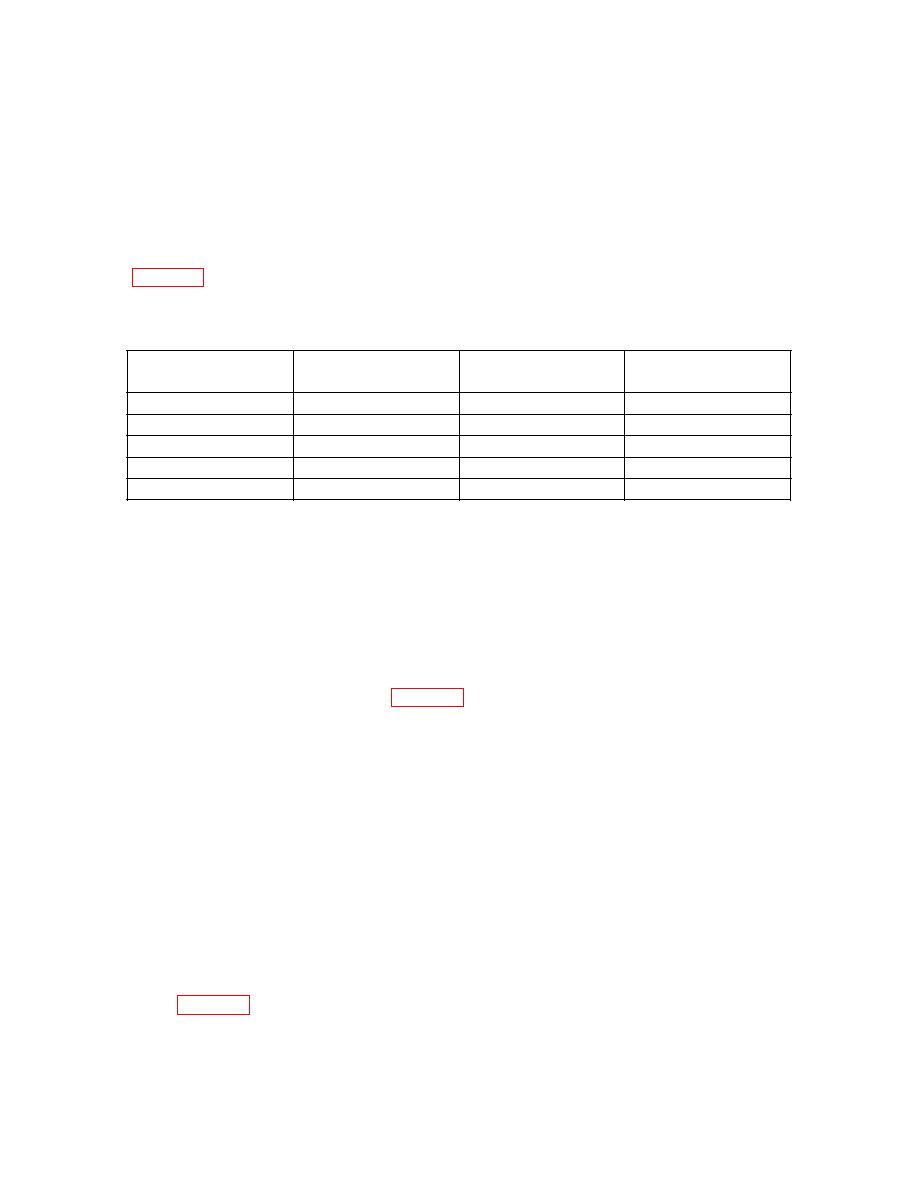
TB 750-651
d. Inspect for coolant cleanliness by withdrawing a small amount of coolant into a
clean and clear container. Look for rust, foreign particles, and/or sediment. Drain, clean,
and flush any cooling system that is contaminated. Look inside the radiator to see if the
flow tubes are clean. If not clean, use cleaning compounds listed in Table III.
8. Use of Engine Cooling System Cleaning Compounds
Table III. Cleaning Compounds
Part Number
Container Size
NSN
Cleaning
Compound
Alkaline
CC2610
1 Gal
Alkaline
CC2611
5 Gal
Alkaline
CC2612
55 Gal
Acid
CC2638
1 Gal
Acid
CC2637
55 Gal
NOTE
Do not use acid cleaner and Alkaline cleaner together. Mixing acid cleaner and
Alkaline cleaners will lose effectiveness to clean radiator. Use acid cleaner
first for removal of scale, corrosion, and oil fouling. Use Alkaline cleaner for
removal of silicate gelation. Removal of silicate gelation is the primary
use of Alkaline cleaner. All other uses provide marginal results.
Use cleaning compounds listed in Table III when necessary to clean heavily rusted or
partially clogged cooling systems. A 10% solution is suitable for most requirements
(1 Gal of cleaner mixed with 9 Gal of water). A 20% solution may be used for heavy
corrosion and scale deposits (2 Gal of cleaner mixed with 8 Gal of water).
9. Recycling of CID A-A-52624 Antifreeze
a. Recycling of used antifreeze conserves resources, reduces the cost of new
antifreeze purchases, and reduces the cost and problems of used antifreeze disposal.
b. An Antifreeze Recycling User's Guide is available from the U.S. Army
TARDEC/RDECOM (POLhelp@tacom.army.mil). The User's Guide provides product
recommendations, operating procedures, and precautions.
c. Currently, two antifreeze recycler units are approved for Army use. Their features
are in Table IV. You should base your selection of an antifreeze recycler system on your
organization's needs and resources.
7

